The DJI Mavic Pro

The “Pocket Drone”
I have carefully waited for the perfect drone to appear that could help me with my wildlife photography. I was reasonably aware of what was happening in the market and I can even say that I own the first one ever made, a Keyence Gyrosaucer model from 1989. I noticed the revolution in piloting brought by the Parrot A.R. and, in parallel, the increasingly attractive models brought out by DJI. I was also looking at the large, professional hexacopters and I even went that close to starting a drone photography company.. in 2005. But my main interest remained wildlife photography and that meant that portability was by far the most important feature for me. And that didn’t happen until 2016.
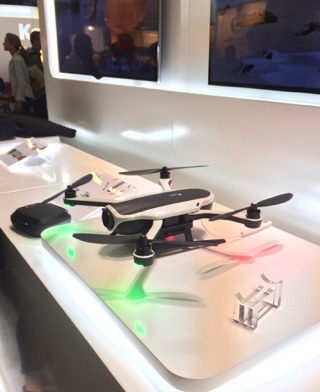
At Photokina 2016, DJI and GoPro presented the first two professional-grade foldable drones. I had a good look at both. The GoPro had better image quality on its side and the chance to change the camera, which was interesting, and I really liked their clamshell remote control which includes its own screen. The DJI was born in a whole ecosystem and inherited the best features of all the existing products in the firm, including very solid self piloting and obstacle avoidance but it had an average camera. In the end, it is the size that decided it. The Mavic folds in a package the size of a 70-200 lens (and weighs about half as much!) so it will fit among the gear of any camera bag.
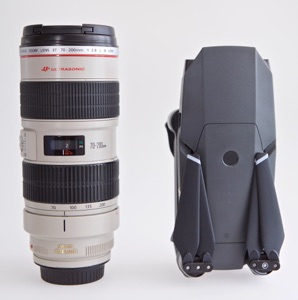
I was in no hurry so I waited dutifully until April 2017 when the Mavic became readily available and bought one.
Opening the box, you see again the impact Apple had in electronics packaging. DJI was a careful student and the product’s enclosure is beautiful and practical for something you will likely interact with only once. The next good surprise is that the Mavic is so well built. Both it and its remote have the finish and feel of a high-end camera with both nice ergonomic touches and elegant design flourishes. I don’t think this has been mentioned much but looking at the Mavic, you feel the same pride of ownership as when you pick up a 1Dx2. For much less money..
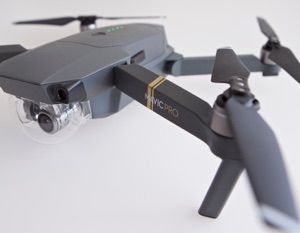
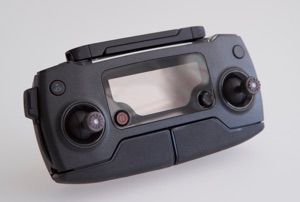
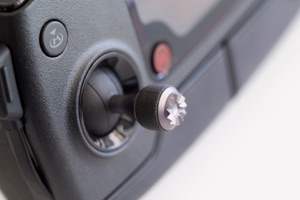
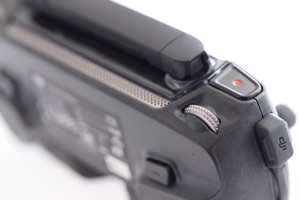
I tend to immediately strip labels off anything I buy. This means I missed the start-up sequence instructions and it took me half an hour to figure out how to switch on the drone and its remote (press the button quickly then again for one second). It makes sense and I should have been more careful. That sorted, bring both joysticks down towards the center of the remote and you’re flying. The Mavic takes over take-off and landing and is completely self stabilizing so even someone who’s never flown anything can be in the air in seconds. Once you’ve satisfied the urge, the next step is to get the DJI Go app and have a good look at the downloadable manual.
You can connect your phone to the remote in a reasonably secure bracket which will accommodate sizes up to the iPad mini. If you disconnect the existing cable, you can connect a standard USB cable under the remote and into any iOS or Android device, including full size tablets, which is extremely convenient. Conversely, you can also set the drone to work over WiFi and control it directly from your phone, without using the remote. The versatility continues inside the software which offer flying modes and several levels of safeguards to suit almost any use. DJI drones are also served by third party Apps and software, greatly extending their capabilities. In fact, apart from the payload and the wind resistance, there is little difference between the Mavic and the much larger Inspire in terms of capabilities and software keeps being written for it.
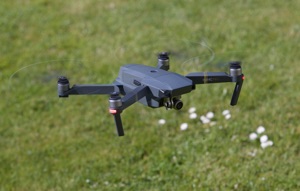
The payload, of course, is of major interest to photographers. The first reports showed very soft images, compared with the GoPro but the Mavic focuses differently and the operator must ensure the auto (or manual) focus is on the right object. It is an extra step but photographers will find it natural. The Mavic takes 12MP images in DNG RAW or up to 4K movies. Due to the tiny lens and sensor neither will win awards (and don’t expect the dynamic range of a Nikon D5 either) but, given the right light, they are adequate for publication. The stabilization, through a gimbal, works very well but pans are done by rotating the drone, which is not as smooth as rotating the gimbal. Almost every parameter is controllable manually and you can link two remotes to separate the job of cameraman and pilot if needed. I haven’t yet found an application that would allow to pre-program perfect fly-bys, but some are very close (Litchi, Autopilot) and it is likely to happen sooner than later. This would allow completely autonomous filming and be a useful additional tool in the Mavic’s belt.
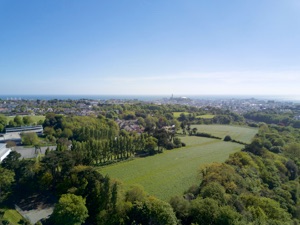
On top of portable aerial photography, I was also interested in a tool for mapping and photogrammetry, useful during expeditions in finding paths or tracks for example. I tried the Pix4D App and Mac OS software and while they won’t win prizes for their ergonomics, they do the job nicely and produce very useful files. The vast range of the Mavic allows you to send it on a mission on its own and recover it, more than 20 minutes later and, legal environment allowing, full of useful images. I was also able to model a building in about an hour with Pix4D although the autofocus issue meant I had to do the photography twice. The Mavic will be limited by its average, visible light camera in commercial applications but it is still capable.
I am waiting for the propeller cages to become available before some of my next projects. We have a cave to explore for bats which has been barred for security and which the drone, equipped with lights and propeller guards, could do easily. I’ll also be able to fly inside tree canopies and nearer animals (some birds could be tempted to attack it and you can’t risk injuring them).
I am not too worried about the lack of upgradability as I am lucid about the life expectancy of any drone. I have already hit two obstacles with mine, each time because the drone thought it knew what to do better than me. To its credit, it survived both encounters with barely a scratch and its assumptions were not unreasonable. In one occasion, I had to snatch it from the air and got hit by a propeller. It was painful, but it didn’t break the skin so I would call it safe enough and ask people from refraining to sharpen the propellers as I have seen being recommended. The minuscule increase in performance is not worth your blood or someone else’s.
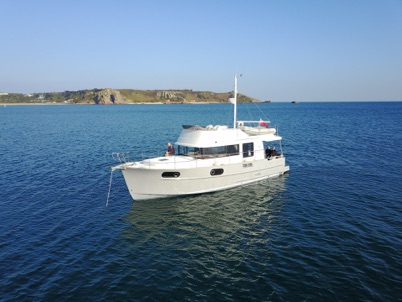
One of the occasions was when I used the drone to photograph a boat. I wanted to see it if was usable at sea and thought it could be a good experiment, maybe worth the risk as the Mavic is not at all waterproof. I first hesitated to launch it as our platform was very small and we had a solid 10-15 Knots of wind but I shouldn’t have worried. It remained perfectly stable after lift off and flew to, and stayed, wherever I sent it. I got my few pictures and brought it back without trouble. I hovered above the hatch which was my landing platform and asked it to land. This is done completely automatically and I wasn’t able to correct for a small movement of the boat which meant the Mavic landed slightly askew. That was as good a landing as any in my book and I went to switch it off with the downward and in control movement. Which didn’t work. I just couldn’t switch off the propellers. Knowing there was still enough power in the battery to make it run at idle for 30 minutes, I tried everything I could to shut down the drone. One of my efforts was misconstrued and the Mavic shot up and sideways into the windscreen and sun visor of the boat. It stopped there, its propellers grinding at the fiberglass and, seeing my chance, I grabbed it from underneath. I still couldn’t shut it down and resorted to pulling its battery off which, expectedly, did the trick. The boat was undamaged, I had a small welt on my thumb and the Mavic’s propellers had a few white streaks on top of them.
I researched the issue and found that the Mavic always tries to establish whether it is safe to do something, like landing. In this case, it was thrown off by not finding itself flat after landing and wouldn’t allow me to switch it off, fearing it would fall from the sky. The rest was probably a bug. I found that there is an emergency shut down command that can be activated but as it involves the come home button and throttle joystick, it could also be misinterpreted with catastrophic results (my first mishap was when activating the come home button from under a tree by accident..).
It is well worth exploring the manual and researching the web to become completely familiar with this complex tool and I can’t wait to see what will come in the constant software upgrades. Your mileage may vary but this was the perfect drone for me.
3 May 2017
